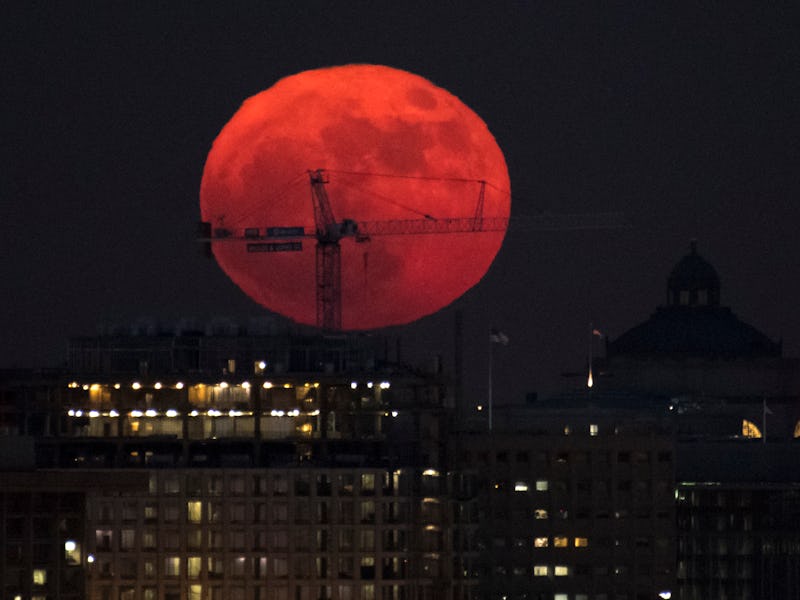Why January 2018 Will Have Two Full Supermoons
There's a whole lot going on with the moon this month.

2018 will be starting off with not one, but two supermoons.
Supermoons are full moons at their closest orbital points to Earth, and appear 14 percent closer and 30 percent larger than when they are at their furthest in the orbit.
The first supermoon, a so-called “wolf moon,” will appear on January 1, and it will be followed on January 31 by a “blue moon.” The name “blue moon” refers to the second full moon of a month. The January 31 blue moon will be extra-special as it also coincides with a total lunar eclipse.
These two supermoons that are greeting 2018 follow another supermoon, which appeared on December 3, 2017. While supermoons are themselves not rare, three in a row certainly are.
Typically, full moons occur once a month, but both January and March 2018 will have blue moons. This is because of the discrepancy between the 365-day solar calendar that we currently follow and the lunar year that many cultures historically followed, which is based on 29.5-day lunar months.
The Metonic cycle from a 19th century manuscript.
To sync these two, astronomers use something called the “Metonic cycle,” a period of approximately 19 calendar years, or 235 full moons (which equate to 235 lunar months), which is nearly a common multiple of the solar year and the lunar month, with only a few hours of difference.
So, every 19 calendar years, the new and full moons appear on close to the same dates of the year. However, the solar and lunar calendars don’t sync up perfectly, since there are 235 full moons during the cycle but only 228 calendar months. Because of this, seven of the calendar months in the 19 year period have two full moons.
And in 2018, this will happen twice, in January and March. The next time that’ll happen is 2037 — so catch it while you can.